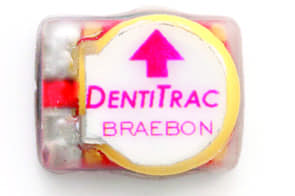As the oral appliance maker’s subsidiary Renew Sleep Solutions opens sleep centers throughout the United States, some dental sleep medicine practitioners raise concerns.
Most makers of oral appliances for obstructive sleep apnea (OSA) distribute their prescription devices via two well-established channels: dental sleep medicine practitioners and direct contracts with insurers. But in December 2016, New South Wales, Australia-based SomnoMed—makers of the SomnoDent line of oral appliances for OSA—debuted a direct-to-consumer channel in the United States, garnering both applause and anger from stakeholders.
The first two locations of Renew Sleep Solutions (RSS), a SomnoMed subsidiary, opened in Oklahoma at the end of 2016, and locations have since opened in Kansas, Missouri, Pennsylvania, Wisconsin, Arizona, Connecticut, Minnesota, and Georgia. An additional 12 sleep centers are planned for 2018, according to the company’s 2016/2017 investor presentation.
According to interviews and investor documents, the aim of Renew Sleep Solutions is to complement SomnoMed’s existing channels by reaching patients who have been previously diagnosed with OSA but are not currently using CPAP (continuous positive airway pressure), the most commonly prescribed treatment in the United States. But if a patient’s sleep study is too old for a new therapy prescription or the patient has never undergone a sleep study in the first place, RSS can facilitate the entire OSA diagnosis to treatment continuum, including billing the patient’s medical insurance. To reach prospective patients, RSS is employing direct-to-consumer marketing, including spots on radio, television, and social media.
“I see this as an alternate channel to increase the number of people who are treated with oral devices,” SomnoMed global CEO Derek Smith said during an in-person interview with Sleep Review at the American Academy of Dental Sleep Medicine (AADSM) 2017 annual meeting. “If you look at the clinical studies, particularly for mild to moderate OSA, they state that oral devices are equally as effective as CPAP. If you look at the market share and the penetration of oral devices versus CPAP, that is not reflected. So I think there is a lot of potential to increase the overall penetration of oral devices.”
The new channel does not interfere with the direct-from-physician referral business that is the primary patient source for most dental sleep medicine practitioners, Smith said, emphasizing that RSS targets what SomnoMed sees as an unmet need: people who have failed CPAP and who do not realize there are other medically backed alternative therapies available for OSA. RSS can help steer patients to FDA-cleared prescription oral appliances—and away from over-the-counter boil-and-bite dental devices that are also marketed direct to consumers, Smith added. Boil-and-bite devices “don’t work very well, so people get disillusioned. We market that we are FDA approved, we have real dentists, it’s a real medical device, it’s real medicine, and there’s a real solution out there,” he said. While SomnoMed has a vested financial interest in outfitting OSA patients with SomnoMed brand appliances, Smith said the advertising dollars invested in RSS’s markets help raise awareness of prescription dental devices and dental sleep medicine as a whole. “By going direct-to-consumer, we’re increasing the water level, or the tide, for all boats,” Smith said.
But some dental sleep medicine practitioners worry that RSS entering their markets will siphon away their prospective patients. They see Renew Sleep Solutions as a direct competitor to their existing dental practices. Some have found their own direct-to-consumer marketing became less effective after RSS entered the scene. In protest, some dentists stopped fitting patients with SomnoMed appliances, a reaction reflected in SomnoMed’s slower than expected growth in the second and third quarters of 2017, though sales bounced back in the fourth quarter.
Stacey Layman, DDS, DABDSM, a dental sleep medicine practitioner at Modern Family Dentistry in Glendale, Ariz, said the RSS locations in Glendale and Paradise Valley, Ariz, have taken away some of her business. “In my market, Phoenix, I have been negatively affected—as would be expected when new competition comes in, especially one that has enormous financial backing and exposure,” she said via email. Layman also disagrees with the view that RSS doesn’t impact dentists because it leaves the physician referral pathway as is. “Most general dentists do not get their business from physician referrals unless they are a specialty clinic,” Layman said.
Kent Smith, DDS, DABDSM, a dental sleep medicine practitioner at Sleep Dallas in Texas, also disagrees that more radio and other direct-to-consumer marketing benefits all dentists who treat patients with OSA. He says his practice has been negatively impacted by the opening of a Simple Sleep Services LLC location in Dallas. Simple Sleep Services (S3) is not owned by SomnoMed, but S3 is the model on which Renew Sleep Solutions is based and from which it is licensed, so impacts are presumed to be the same for new S3 and new RSS openings. (In April 2016, SomnoMed acquired the worldwide exclusive rights outside of Texas to Simple Sleep Services’ business model. S3 remains independent of SomnoMed and continues as a SomnoMed customer. According to a report by financial services firm Wilsons, the Dallas S3 location reached 1,500 devices, annualized, in its second full year and is growing well.)
Kent Smith said via email, “Perhaps this is true for ‘most dentists’ [who don’t exclusively practice dental sleep medicine]. For those of us who make treating this set of patients a large part of our practice, or even do so full-time, I can’t agree. We externally market, and many of us use radio. When Simple Sleep is on 6 or more stations…our ads disappear into the noise. We are slowly becoming airwave-irrelevant because we can’t compete. Staying consistent with radio dollars spent, the number of radio referrals in my office dropped by 16% the first year that Simple Sleep took over the stations and another 20% the next.”
In investor relations documents, SomnoMed reported that its US oral appliance business recorded slower than expected growth during half of 2017 “having been affected by a reaction of some SomnoMed customers to the perceived channel conflict between their own sales and RSS.” But this business recovered in the fourth quarter due to “better communication with these customers, a strong finish to the first half year period and initiatives in Managed Care.”
Financial services firm Wilsons stated in a February 2017 report, “Investors will need to keep an eye on the RSS roll-out in America, which did provoke some modest push-back from ‘direct’ customers in the 1H [first half], who perceived a competitive threat. We don’t expect this phenomenon to have a materially adverse impact on SomnoMed’s US device business, believing that the core offering (price, quality, reimbursement access and turnaround times) will underpin US business performance through this marketplace transition. RSS is up and running, and is going to become a permanent fixture in the US sleep market from here.”
Dentist Kent Smith also has concerns about whether Renew Sleep Solutions centers will follow all of dental sleep medicine’s best practices including considering multiple treatment options, providing appropriate follow-up care, communicating with the patient’s other healthcare providers, and hiring Diplomates of the American Board of Dental Sleep Medicine (ABDSM). “I certainly don’t mind more exposure to oral devices but I also don’t want the reputation of dental sleep medicine to be sullied any more than it is in 2017,” Kent Smith said.
SomnoMed’s Derek Smith said RSS dentists are being trained through SomnoMed and S3 to start and the company is “looking to put a more comprehensive training package in place.” AADSM guidelines are followed, he added, and SomnoMed encourages RSS dentists to join the AADSM. One RSS dentist is currently in the process of becoming an ABDSM Diplomate.
RSS centers do not have on-staff sleep physicians but have expanded on a relationship with Comprehensive Sleep Medicine group that S3 established. “If [patients] need CPAP, they will be prescribed a CPAP,” Derek Smith said. “The sleep physician deals with all of that. We don’t touch that. If oral devices are the best solution for the patient, then they’ll prescribe an oral device.”
Each RSS location is a dental services organization (DSO), in which the individual dentist owns the practice and SomnoMed acts as a management company. When asked if that means the dentist can provide the patient with a non-SomnoMed oral appliance, Derek Smith responded, “There is always that option because at the end of the day, it’s the dentist’s decision.”
Some dental sleep medicine practitioners see the Renew Sleep Solutions launch as a move in the right direction for the industry. John Tucker, DMD, a dentist at Erie Dental Sleep Therapy in Pennsylvania, says he supports an “all hands on deck” approach to remediating the epidemic of insufficient sleep in the United States. “I have been treating the PAP intolerant patient with oral appliance therapy for the last 10 years….I have many patients express anger that they were not informed of alternative treatment options for their disease,” Tucker said via email.
“My father was a dentist and I distinctively remember back in the early ’70s, the paranoia and pandemonium in the dental profession when Sears announced they were entering the dental profession. The discussions included, ‘here goes the end of professional care and private practice,’ among my father’s peers. What they didn’t realize was the number of patients that felt they were blocked from dental treatment because they couldn’t get care! Fast-forward 37 years later and we see multiple DSOs in the marketplace. Once again, we have seen an increase in the availability of care and dental treatment with multiple health benefits to our American citizens.
“Much like the ’70s when the dental profession felt threatened by losing dental patients, many dental sleep medicine practices feel threatened….They feel they will lose patients to the new dental sleep medicine DSOs. I don’t feel that is [the] case. My opinion is the…DSOs will increase public awareness of this devastating disease and provide education regarding a valid treatment alternative, oral appliance therapy, leading to positive treatment outcomes.”
Regardless of varying stakeholder perception of RSS, the financial perception is overwhelmingly positive. Financial services firm Wilsons said in an August 28, 2017 report: “RSS clinics are breaking even within six months, with good volume and revenue signals. We are excited about the prospects for this clinic network to increase US market penetration for oral appliance therapy and drive earnings.” Wilsons also predicts that by fiscal year 2020, the RSS network will overtake SomnoMed’s core business as the dominant source of earnings before interest, taxes, depreciation, and amortization (EBITDA). Wilsons states, “Other parties may seek to copy the [RSS] model and compete with a broader range of non-SomnoMed oral appliances that are approved for the US market. SomnoMed is the only operator with the requisite manufacturing capacity, but competitive interference should be expected if the [RSS] network proves to be as successful as forecast.”
The RSS subsidiary is led by James “Jim” R. Evanger, MBA, BA, who was named CEO of RSS shortly after SomnoMed acquired the business model rights. Evanger came to SomnoMed after managing American Sleep Medicine LLC, which has multiple sleep centers across the United States. According to SomnoMed’s investor relations documents, RSS locations open for 5 months or longer generate a positive contribution before RSS head office overheads. Investment and start-up costs are below model assumptions. Initial patient capture, appointments, and treatment sales are in line with expectations and the financial model. Center operating costs and head office expenses are in line with expectations. A growing pain is that revenue recognition has been slower than anticipated due to a greater number of patients needing a sleep diagnosis, credentialing of dentists in certain states, and a limited capacity of outsourced billing company to process insurance claims. Nonetheless, “All centres opened in FY2017 expected to generate positive contributions in 2017/18, funding most of the new investment in opening an additional planned 12 centres during FY2018,” SomnoMed states.
As Renew Sleep Solutions enters new markets, more dental sleep medicine practitioners will likely weigh in on whether the net impact is positive or negative. But SomnoMed’s message will remain the same. According to Derek Smith, “The main message is we’re not out there to compete with dentists. We’re there to really raise the tide for everybody. Because oral devices are underpenetrated versus their effectiveness. And we want to change that.”
Sree Roy is editor of Sleep Review.
Top photo: A Renew Sleep Solutions location opened across from King of Prussia Mall in Pennsylvania in 2017. Photo by Sleep Review.






Derek Smith says the RSS model does not compete with dentists. Dentists, who have invested extensively in education, developed personal relations with sleep physicians, ongoing relationships with patients, and are located near a RSS business (or another of their ilk), and are loosing market share, to believe that’s not competition?
I whole-heartedly agree with Dr Tucker’s point as to the need to build awareness about sleep disordered breathing (SDB). I have been learning about dental sleep medicine (DSM) and sleep medicine since 2000. I have learned from people like Keith Thornton, Alan Moses, Allan Lowe, Fernanda Almeida, Jon Parker, Harold Smith Gail Demko, Norm Blumenstock, Steve Carstensen, Todd Morgan, Peter Cistuli, John Remmers, Jaimison Spencer, and many others. I am grateful that what I’ve learned benefits me and my patients. Presently, there has been consolidation of numerous individual hospitals into large “systems”. Individual doctors have been “forced” to join PSAs or leave practice. We are told that there are benefits to economy of scale. Is there evidence that these changes, including the RSS model, will improve patient treatment outcomes? Will dentists practicing DSM be better off moving forward? Will the principles and investors of RSS be better off? Will people suffering from SDB and co-morbidities be better off?
I’ve had my mouth piece for two years. I live in Tulsa. Where can I go for future assistance?
Where can I get help after Renewed Sleep Solution closes for good?
I have a oral appliance with a DOT Micro chip for Sleep Apnea. This is by the FMC / DOT for a commercial drivers license.
With the facility closed in King of Prussia, PA, I am in need of another facility to down load the report for my CDL renewal.
Excellent explanation, it’s simple & focus
About one year ago I saw an Advertisement for an oral device for Sleep Apnea by Renew Sleep Solutions. I have had Sleep Apnea for about 20 years. I could not wear a traditional CPAP machine. I could not sleep with it on my face. I saw Dr. Holoman at Renewed Sleep on Meridian in Oklahoma City, Okla. I took an in home sleep study which showed I had severe sleep apnea. He fitted me with the device anyway. I made many return visits for adjustments and I used the Key many times also to bring my Jaw forward to open passage. After 4 months I took another in home sleep study with the device in my mouth. I didn’t improve my condition of Obstructive Sleep Apnea mush at all. I need to persue it further but I need the results of both of my sleep studies so I don’t have to do another. The must be better CPAP Machines or better treatments by now. I need to have those studies sent to my primary care physician so I can try again to find a solution. I don’t want Pulmonary Hypertension. Athena Friese,MD Canadian Valley Integris, Yukon, Oklahoma 73099. Please contact me or Dr Friese with the information we need.
CKathryn Jones